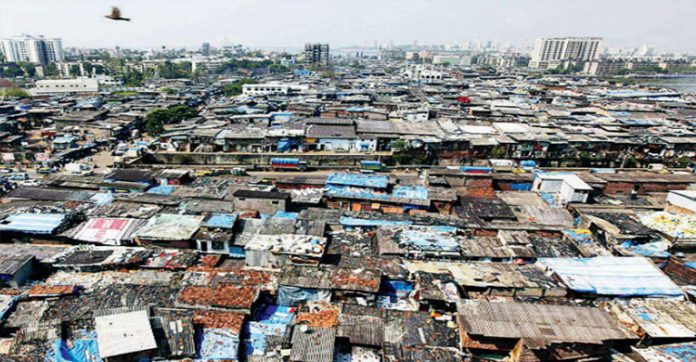Mumbai: Mumbai’s most populated slum, Dharavi has more than 1,800 covid-19 positive cases, becoming a highly infectious zone.
The already under-funded healthcare system of the locality is facing heavy numbers of cases and noted more than 41,000 patients on Thursday.
The state of Maharashtra holds the largest share of cases in the country going up to a staggering 2,10,000 confirmed patients. The fatality rates are currently at 6,300.
Although these numbers are far lesser compared to those of the United States, and other hard-hit countries, epidemiologists and researchers say that India is yet to see its peak numbers which is weeks away.
Kunal Kanase, a 31-year-old student and community activist who is a resident of Dharavi is working day and night trying to get the authorities to quarantine his neighbour’s family. He tweeted to the Mumbai police when his actions couldn’t get him the much needed attention from officials, after which the police quickly came to take the man’s family to a quarantine centre.
“I used to teach his two children and felt good for the family since they were relatively safer now,” he said, living with his parents and younger brother.
Kanase is among many unrecognized heroes working to protect some of India’s most vulnerable people from the negative effects of the coronavirus and the economically devastating nationwide lockdown that has left millions jobless and starving.
According to him, when he tried to report about another woman infected with covid-19 who lived less than 3 metres away from Kanase’s house, his pleas weren’t heard this time and no officials came to isolate or test the other family members of the woman.
Dharavi is the same slum which gained popularity after the Oscar-winning movie Slumdog Millionaire was filmed here.
Set between busy train tracks and the heavily polluted Mithi River, which separates the slum from Mumbai’s developed buildings and areas, the neighbourhood is a maze of tiny lanes, each one filled with hundreds of people, many living in tin shacks.
Families or groups of migrant workers often pile into a single room and hardly anyone has a private bathroom.
With the major concern being the lack of safe water, the sanitation is at its worst here and is at the highest risk to transmit deadly infections to its residentsKiran Dighavkar, a Mumbai official who is overseeing medical workers and volunteers in Dharavi, said his staff is focused on cleaning the neighbourhood’s 500 toilet complexes. Each is visited by at least 1,000 people a day.
“These people have to come out twice a day, for food and to use the toilets. So you can imagine how tough it is to practise social distancing,” Dighavkar said.
Kanase and his team at Dharavi Diary, a group of young leaders who work to improve conditions in the slum, have been working to help those affected by the pandemic, handing out bags of rice, flour, cooking oil and sugar to feed a family for two weeks. But they lack the resources and often have to filter out the most needy ones.
India’s poor – in Dharavi and the rest of India – have borne the brunt of the nationwide lockdown, which finally began to ease this week. Many migrant workers walked for hundreds of kilometers from the cities to their native villages rather than suffering from starvation.
However, Kanase has taken this in a positive strive and talks about how the situation has brought out the help offered by the people of the community for each other.
“I live in Dharavi and I am proud of it,” he said.







